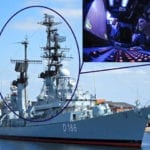Sensors Make Sense Beyond IoT Applications
Synergy between advanced sensors as well as related connectors and cable assemblies is opening new avenues of growth and profit for the interconnect industry.
Electronic sensors are popping up everywhere, and this technology is expected to proliferate logarithmically over the next few years. Sensors act as the eyes and ears of electronic equipment. They are the bridge between conditions in the physical world and electronic systems that can use this input to analyze and take desired actions.
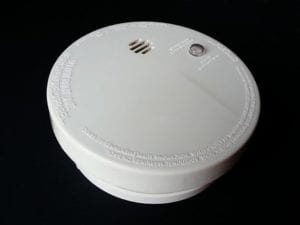 There are literally hundreds of sensor types that are designed to detect or measure everything from temperature to geographic location. They serve critical roles that range from detecting smoke or carbon dioxide in residential smoke alarms to identifying incoming ballistic missiles.
There are literally hundreds of sensor types that are designed to detect or measure everything from temperature to geographic location. They serve critical roles that range from detecting smoke or carbon dioxide in residential smoke alarms to identifying incoming ballistic missiles.
The universe of electronic sensors can be categorized into a series of general types:
- Binary sensors that detect a specific event, such as fire or water
- Quantitative measurement within an established range, such as liquid levels
- Thermal sensors
- Optical sensors
- Electric sensors
- Magnetic sensors
- Position sensors
- Data-reading sensors, such as RFID
- Meter-reading sensors
- Material composition sensors
- Weather sensors
- Specific chemical or gas sensors
Sensors utilize a variety of technologies, including infrared, magnetic, radiation gravity detection, piezoelectric, acoustics, and ultrasonics. They are fabricated using materials as simple as bi-metallic strips and can be as complex as the entire class of sensors that utilizes advanced micromechanical manufacturing technologies.
The Internet of Things will depend on a host of standard and advanced sensors of all types and will represent a huge market for sensors. Video cameras now installed on most urban street intersections as well as the Internet-linked sensors that detect occupants and control room temperature are only the first wave of sensors that will become even more pervasive in the next few years.
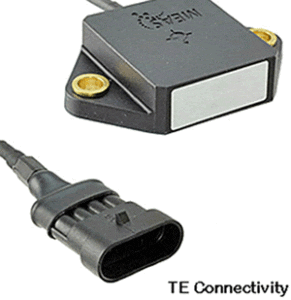
TE Connectivity’s automotive, transportation, and off-road sensors
Today’s cars contain dozens of sensors that will grow in number to enable the next generation of driver-assist functions. Embedded sensors automatically adjust air and fuel to optimize each cycle of the combustion process, while others warn of low tire pressure. Future autonomous vehicles will be studded with internal and external sensors that will detect and enable communications with traffic control devices as well as other cars. Sensors can also be a source of frustration, as that pesky “check engine” light is often the result of a malfunctioning sensor. One forecast puts automotive sensor usage at 10 billion devices per year by 2020.
Low-cost sensors are typically used in a variety of consumer applications, while other more sophisticated sensors have been adapted to the specific requirements of individual industries, including medical, industrial control, transportation, military, avionics, as well as oil and gas exploration. Sensors used in medical equipment, for instance, must be accurate and withstand multiple sterilizations, while those in military must be rugged and reliable in harsh environments.
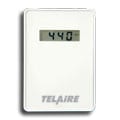
Amphenol’s Telaire Air Quality Sensor
Current industry leaders include Bosch, Texas Instruments, STMicroelectronics, and Honeywell, as well as a host of smaller manufacturers that supply sensors for specific markets or applications. The incredible sales potential of sensors has attracted the attention of several major connector manufacturers that are looking for new avenues for growth. The result has been a flurry of acquisitions that has enabled connector manufacturers such as Amphenol, Molex, and TE Connectivity to rapidly expand their sensor offerings. The objective is to exploit the synergy between connectors and sensors by expanding their portfolio of sensing devices and related cable assemblies. All three of these suppliers have already established extensive lines of sensors designed for automotive applications. Rather than try to compete in the low-cost generic sensor market, these suppliers are focusing more on higher performance/higher margin sensors used in more specialized sectors such as transportation, medical, industrial, military, and aerospace.
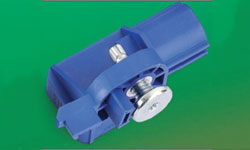
Molex’s automotive crash sensor
Flow rate, temperature, position, and pressure sensors used in industrial automation, for instance, fit this market niche nicely. The ability to utilize real-time data from a network of sensors can enable the management of a process with precision as well as identify areas for improvement. Industrial control equipment designed to support Industry 4.0 will rely heavily on a network of sensors that will generate the data to be exchanged within the “smart factory.” Sensor fusion refers to systems that utilize multiple sensor inputs in a network to achieve a result. Working with multiple inputs, systems have begun using artificial intelligence to tightly control a process to a degree not possible in the past. Robots using artificial intelligence can utilize input from an array of sensors to quickly learn new tasks.
Many consumer-product-related sensors are soldered directly to a PCB, but others, particularly those in medical, industrial control, and mil/aero applications where long-term reliability is a requirement, may incorporate a separable interface. Applications in commercial and military markets where high reliability in challenging environments is essential create a sweet spot for connector manufacturers. The ability to offer both the sensor and interconnect can allow access to an OEM design team early in the new product development cycle. Access at that point can potentially open the door to proposing the full range of connectors and cable assemblies required throughout the system.
Military demands for unique sensors in such diverse applications as chemical/biological agent detection, night vision, and laser weaponry are driving advances in sensor technology. The ability to make sense of multiple streams of high-speed sensor input now exceeds our ability to sort out actionable data. The result has been the creation of the Mathematics of Sensing Exploitation and Execution project, which is focused on developing autonomous systems capable of analyzing images and actions in real time. The growth of electronic warfare will be another aspect of continuing sensor research. Space-based sensor systems will be required to provide the degree of surveillance necessary to support future security operations. Demand for exceptionally high quality images will continue to spur development of low-light and high-resolution sensors.
Concerns about “Big Brother” watching over us, and the loss of privacy, have sparked a lively debate about the rise of ubiquitous sensors. However, the popularity of consumer devices that are constantly monitoring us, along with video surveillance of nearly every public space, is making the debate moot. We will continue to co-exist with a rising tide of sensors that will provide both advantages as well as challenges. For the interconnect industry, the synergy between advanced sensors as well as related connectors and cable assemblies is opening new avenues of growth and profit.
Recently posted:
[related_posts limit=”10″]
- Optics Outpace Copper at OFC 2024 - April 16, 2024
- Digital Lighting Enhances your Theatrical Experience - March 5, 2024
- DesignCon 2024 in Review - February 13, 2024




